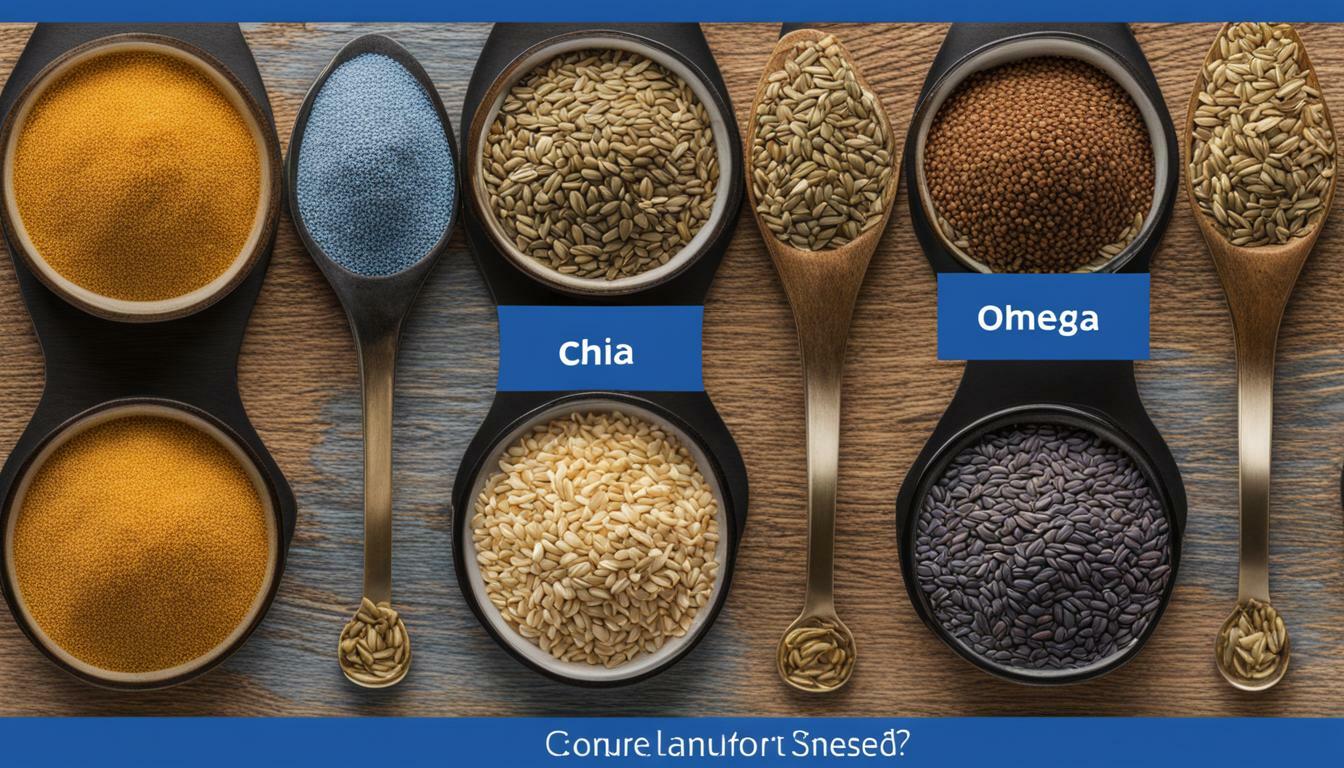Ginger and turmeric are both popular spices with distinct flavors and health benefits. Derived from their roots, these spices are known for their culinary uses and potential therapeutic properties. In this article, we will explore the unique characteristics, benefits, and the similarities and differences between ginger and turmeric roots. Whether you’re a fan of ginger’s pungent taste or turmeric’s vibrant color, understanding their individual properties will enhance your culinary experiences and provide insight into their potential health benefits.
- Ginger and turmeric are tropical perennial plants with flavorful rhizomes.
- Turmeric contains curcumin, an antioxidant known for its anti-inflammatory properties and potential benefits in treating osteoarthritis, cancer, Alzheimer’s, and Huntington’s disease.
- Ginger has a refreshing and pungent flavor and is known for its anti-inflammatory effects, which can help with conditions like osteoarthritis and lower back pain.
- Both ginger and turmeric are rich in antioxidants, have anti-inflammatory benefits, and may have positive effects on heart health.
- Consult with a healthcare professional before regularly consuming ginger or turmeric.
Ginger Root: Benefits and Uses
Ginger root is a versatile spice known for its refreshing flavor and numerous health benefits. Derived from the rhizome of the Zingiber officinale plant, ginger has been used for centuries in traditional medicine and culinary practices.
“Let food be thy medicine and medicine be thy food.” – Hippocrates
One of the key benefits of ginger root is its anti-inflammatory effect. It contains compounds called gingerols, which have been shown to reduce inflammation in the body. This makes ginger an excellent natural remedy for conditions like osteoarthritis and lower back pain. Regular consumption of ginger can help alleviate pain and improve mobility.
Ginger is also renowned for its ability to alleviate nausea and digestive issues. It can be consumed in various forms, including fresh, dried, or powdered. Ginger tea and ginger-infused dishes are popular choices for relieving digestive discomfort and promoting healthy digestion.
Additionally, ginger has demonstrated anti-tumor effects in certain studies. Some research suggests that the compounds present in ginger may help inhibit the growth of cancer cells. While more research is needed to fully understand the extent of ginger’s anti-cancer properties, its potential as a natural cancer-fighting agent is promising.
| Ginger Root Benefits | Ginger Root Uses |
|---|---|
| Anti-inflammatory properties | Ginger tea |
| Pain relief for conditions like osteoarthritis and lower back pain | Ginger-infused dishes |
| Anti-tumor effects | Ground ginger in baking |
| Alleviates nausea and aids digestion | Ginger supplements |

Ginger root is a true superfood packed with beneficial compounds. Its refreshing taste and versatile nature make it a popular addition to various dishes and beverages. Whether used in cooking, brewed as a tea, or taken in supplement form, incorporating ginger into your diet can help boost overall health and well-being.
Exploring Ginger’s Potential
While ginger is generally safe for most people, it is essential to consult with a healthcare professional before regularly consuming ginger, especially if you have any underlying medical conditions or are taking medications. They can provide personalized advice based on your specific health needs.
Turmeric Root: Benefits and Uses
Turmeric root, with its distinct yellowish color and inner orange surface, offers a range of benefits and uses in both culinary and medicinal applications. Derived from the rhizomes of the Curcuma longa plant, turmeric contains antioxidants called curcumin, which contribute to its vibrant color and potent health properties. Let’s explore the various benefits and uses of turmeric root.
“Curcumin, the key compound found in turmeric, has been researched extensively for its potential therapeutic effects.”
One of the primary benefits of turmeric root is its powerful anti-inflammatory properties. Curcumin has been shown to help reduce inflammation in the body, making it beneficial for managing conditions such as osteoarthritis and rheumatoid arthritis. It may also have a positive impact on chronic inflammatory diseases like inflammatory bowel disease and pancreatitis.
| Turmeric Root Benefits | Turmeric Root Uses |
|---|---|
| Anti-inflammatory effects | Culinary spice |
| Potential cancer-fighting properties | Natural food colorant |
| Antioxidant-rich | Traditional medicine |
In addition to its anti-inflammatory effects, turmeric root is believed to have potential cancer-fighting properties. Curcumin has been studied for its ability to inhibit the growth of tumor cells and prevent their spread. While more research is needed, it shows promise in the prevention and treatment of various forms of cancer, including breast, colon, lung, and prostate cancer.
The health benefits of turmeric root extend beyond its anti-inflammatory and anti-cancer properties. Its antioxidant-rich nature helps protect the body against oxidative stress, which can damage cells and contribute to chronic diseases. Turmeric root is also commonly used as a natural food colorant, giving dishes a vibrant yellow hue. Moreover, it has been an integral part of traditional medicine practices for centuries, used to treat a variety of ailments and promote overall well-being.

Despite their distinct flavors and appearances, ginger and turmeric roots share some common properties and health benefits. Both spices are derived from the rhizomes or roots of tropical perennial plants, and they have been used for centuries in various cuisines for their flavor and medicinal properties.
One of the key similarities between ginger and turmeric is their rich antioxidant content. Antioxidants help protect the body from harmful free radicals, which can cause oxidative stress and contribute to chronic diseases. Both ginger and turmeric are packed with powerful antioxidants that help boost the immune system and promote overall health.
In addition to their antioxidant properties, ginger and turmeric also have potent anti-inflammatory effects. Inflammation is a natural response by the body to protect against injury or infection, but chronic inflammation can lead to various health problems. Ginger and turmeric have been shown to reduce inflammation and alleviate symptoms of conditions like osteoarthritis.
The table below summarizes the similarities between ginger and turmeric roots:
| Ginger | Turmeric |
|---|---|
| Refreshing and pungent flavor | Distinctive earthy and slightly bitter flavor |
| Contains compounds like gingerol | Contains antioxidants called curcumin |
| Anti-inflammatory effects | Anti-inflammatory effects |
| May help with conditions like osteoarthritis and lower back pain | Potential benefits in treating osteoarthritis, cancer, Alzheimer’s, and Huntington’s disease |
It’s important to note that while ginger and turmeric offer many health benefits, it’s always advisable to consult with a healthcare professional before incorporating them into your regular diet or using them for medicinal purposes. They can interact with certain medications and may not be suitable for everyone.
In summary, ginger and turmeric roots may have different flavors and appearances, but they share several common properties and health benefits. Both spices are rich in antioxidants, have anti-inflammatory effects, and may have positive effects on heart health. Whether used in cooking or taken as supplements, ginger and turmeric can be valuable additions to a healthy lifestyle.
Differences Between Ginger and Turmeric Roots
While ginger and turmeric roots have similarities, they also have distinct differences in taste, appearance, and potential health benefits. Understanding these differences can help you choose the right spice for your culinary or medicinal needs.
Taste: Ginger has a refreshing and pungent flavor with a hint of spiciness, making it a popular choice in both sweet and savory dishes. On the other hand, turmeric has a warm and earthy flavor with a slightly bitter undertone, adding depth to curries and other savory dishes.
Appearance: Ginger root has a brownish skin and a creamy yellowish interior. It is often knobby and irregularly shaped. Turmeric root, on the other hand, has a bright yellowish-orange outer skin and a vibrant orange interior. Its appearance is more uniform and smooth compared to ginger.
Health Benefits: Both ginger and turmeric have impressive health benefits, but their key active compounds differ. Ginger contains gingerol, a compound known for its anti-inflammatory effects. It can help reduce pain and inflammation, making it beneficial for conditions like osteoarthritis and lower back pain. Turmeric, on the other hand, contains curcumin, a powerful antioxidant with potent anti-inflammatory properties. Curcumin has been studied extensively for its potential in treating various diseases, including osteoarthritis, cancer, Alzheimer’s, and Huntington’s disease.
| Ginger | Turmeric |
|---|---|
| Refreshing and pungent flavor | Warm and earthy flavor |
| Brownish skin with a creamy yellowish interior | Bright yellowish-orange outer skin with a vibrant orange interior |
| Contains gingerol with anti-inflammatory effects | Contains curcumin with potent anti-inflammatory properties |
“Ginger has a refreshing and pungent flavor, while turmeric has a warm and earthy flavor.”
When incorporating ginger and turmeric into your diet, it is important to note that everyone’s body responds differently. It is always recommended to consult with a healthcare professional before regularly consuming these spices, especially if you have any existing health conditions or are taking medications.
Discover the unique flavors and health benefits of ginger and turmeric by experimenting with both spices in your cooking. Whether you’re looking to spice up your meals or harness the potential health benefits, ginger and turmeric roots are versatile additions to any kitchen.

Ginger and turmeric roots are both remarkable spices, each offering their own set of health benefits and culinary versatility. These tropical perennial plants provide a delightful burst of flavor in various cuisines, while also providing potential medicinal properties.
Derived from their rhizomes or roots, ginger and turmeric have distinct characteristics that make them unique. Turmeric, from the Curcuma longa plant, has an outer surface that is yellowish, while its inner surface boasts a vibrant orange hue. Packed with antioxidants called curcumin, turmeric is renowned for its powerful anti-inflammatory properties. It has shown promise in the treatment of conditions such as osteoarthritis, cancer, Alzheimer’s, and Huntington’s disease.
Ginger, on the other hand, hails from the Zingiber officinale plant and is prized for its refreshing and pungent flavor. It contains compounds like gingerol, which contribute to its anti-inflammatory effects. Ginger has been used as a natural remedy for various ailments, including osteoarthritis and lower back pain. It is also known for its anti-tumor effects and its potential to alleviate nausea.
Both ginger and turmeric are rich in antioxidants, providing numerous health benefits. They possess anti-inflammatory properties that can help reduce inflammation and promote overall well-being. Additionally, research suggests that these spices may have positive effects on heart health.
While ginger and turmeric offer a wide range of benefits, it is important to note that everyone’s health needs are unique. Consulting with a healthcare professional before incorporating ginger or turmeric into your regular diet is essential to ensure it aligns with your individual health requirements.
FAQ
What is the difference between ginger and turmeric roots?
Ginger and turmeric are both spices derived from tropical perennial plants, but they have distinct characteristics. Ginger has a refreshing and pungent flavor, while turmeric has a more earthy taste. Ginger is known for its anti-tumor effects and ability to alleviate nausea, while turmeric contains curcumin, which has anti-inflammatory properties and potential benefits in treating conditions like osteoarthritis, cancer, Alzheimer’s, and Huntington’s disease.
What are the benefits of ginger root?
Ginger root has various health benefits. It has anti-inflammatory effects that can help with conditions like osteoarthritis and lower back pain. Ginger is also known for its anti-tumor effects and its ability to alleviate nausea. Additionally, ginger has a refreshing flavor and is commonly used in cuisines for its taste and potential health benefits.
What are the benefits of turmeric root?
Turmeric root contains antioxidants called curcumin, which have anti-inflammatory properties. It is known for its potential benefits in treating conditions like osteoarthritis, cancer, Alzheimer’s, and Huntington’s disease. Turmeric has a yellowish outer surface and orange inner surface and is commonly used in cuisines for its flavor and potential health benefits.
What are the similarities between ginger and turmeric roots?
Ginger and turmeric roots share some similarities. They are both derived from rhizomes or roots of tropical perennial plants. Both ginger and turmeric are rich in antioxidants, have anti-inflammatory benefits, and may have positive effects on heart health.
What are the differences between ginger and turmeric roots?
Ginger and turmeric roots have differences in flavor, appearance, and specific health benefits. Ginger has a refreshing and pungent flavor, while turmeric has an earthy taste. Ginger is known for its anti-tumor effects and ability to alleviate nausea, while turmeric contains curcumin, which has anti-inflammatory properties and potential benefits in treating various diseases. It is important to consult with a doctor before regularly consuming ginger or turmeric.
 Skip to main content
Skip to main content


